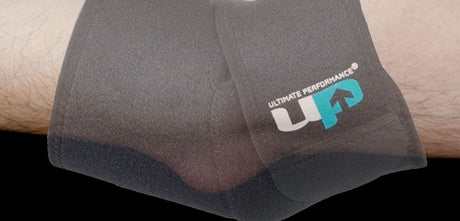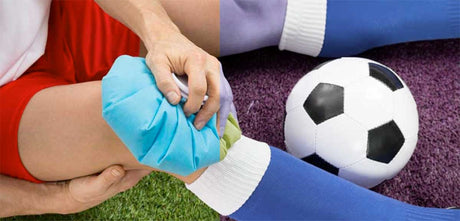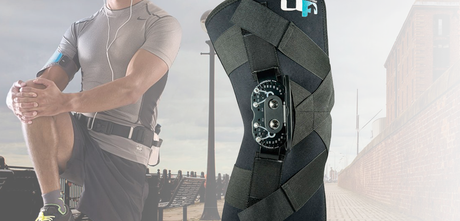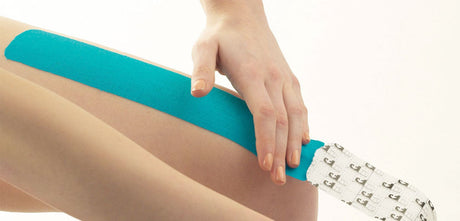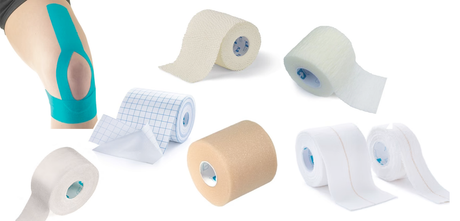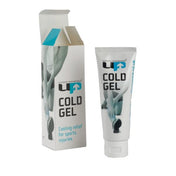Kinesiology tape for running is the colourful tape popular with athletes and runners. Its uses include supporting joints and muscles, reducing pain and swelling, as well as improving performance.
Developed in the 1970’s by a Japanese chiropractor Dr. Kenzo Kase as a tape which provides support in the right places, but doesn't limit movement. Kinesiology tape is great for runners who suffer from overuse injuries to the feet, lower leg, knees, thigh and groin muscles.
Which Kinesiology tape is best for running?
Our basic Kinesiology tape is perfect for running. It offers consistent stretch with great elastic memory. Superb adhesive (5N/cm), maintains tension and stays on for up to 7 days. Water resistant, including shower immersions. We use hypoallergenic glue to reduce irritation on the skin during wear.
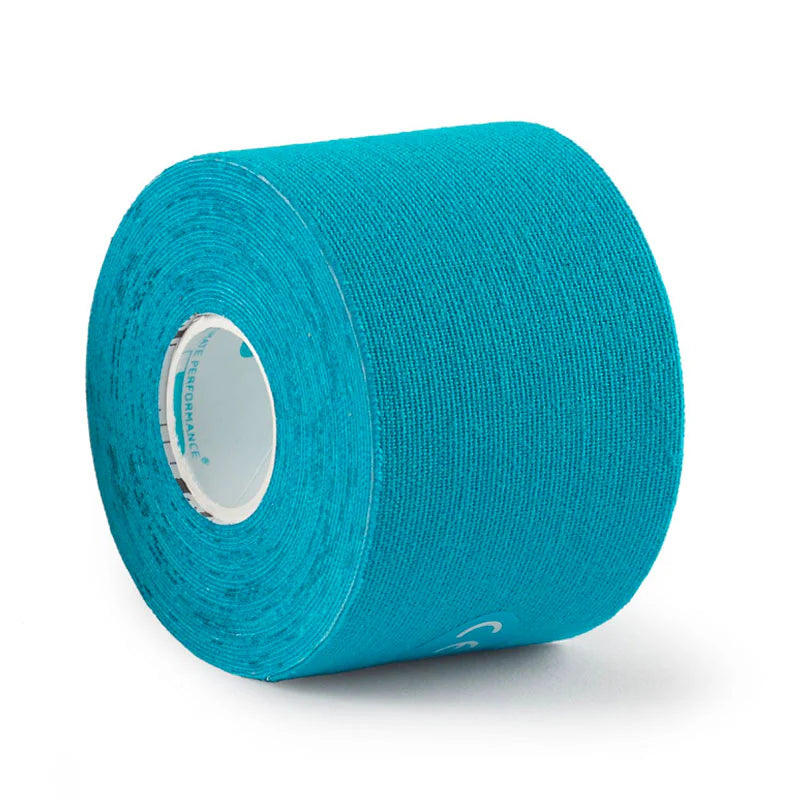
Before you start, be aware of the basic principles of applying Kinesiology tape. Make sure the area is clean and dry and cut corners off the tape to help prevent it pealing off.
Achilles tendon
Applying just two strips of Ultimate Performance Kinesiology tape for running at the back of the lower leg helps support the Achilles tendon. As a result, repetitive strain on the tendon is reduced helping relieve Achilles pain. Tape is just one of our products for treating Achilles pain.

With your foot in a slightly Plantar flexed (pointed) position, apply tape from under the heel to the top of your calf muscle.

Next apply a short strip around the ankle to hold the supporting strip in place.
Calf muscles
Applying Kinesiology tape to the calf muscles at the back of the lower leg helps support and activate the muscle whilst recovering from a calf strain.

Apply kinesiology tape from the bottom of you calf muscle (where the Achilles starts) and up over the belly of the muscle.

Next apply a short strip across the first strip to hold the supporting strip in place.
Iliotibial band
Iliotibial band friction syndrome is common in runners, causing pain on the outside of the knee.

Apply kinesiology tape from just below the outside of the knee, along the ITB up the outside of your thigh.

Next apply a short strip across the first strip just above the knee to hold the supporting strip in place.
Patella
Patella pain is another common problem that Kinesiology tape for runners can help with. Caused by the kneecap not tracking properly the tape helps position the patella is your knee moves.
Jumper's knee or Patella tendonitis is pain from the patella tendon where it attaches to the bottom of the patella.

Take a length of kinesiology tape and cut it along its length half way, so the tape splits into two separate strips.

Apply another strip around your knee, just below the patella.This also supports the patella tendon.
Shin
Shin pain is another great use of Kinesiology tape for runners.

Apply a strip from the inside of the ankle, just behind the medial malleolus, up the inside of the shin covering the painful area.

Next apply a cross strip over the most painful area. This secures the vertical strip and gives additional support.
Foot
Plantar fasciitis is probably the most common cause of heel pain. There are many ways to tape for Plantar fasciitis but this method is a quick and simple method using Kinesiology tape for runners.

Cut a strip lengthways up three quarters of its length to create four separate attached strips.

Next apply an anchor strip around your foot to secure the support strips.
K-tape is not just great for the lower limb, but also helps with low back pain and hamstring strains.
Recommended links:
- Buy anti-blister running socks from our sister site 1000Mile.co.uk



